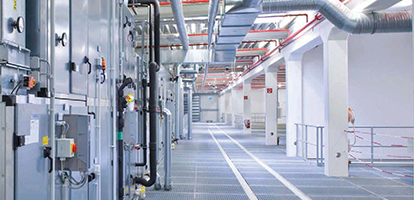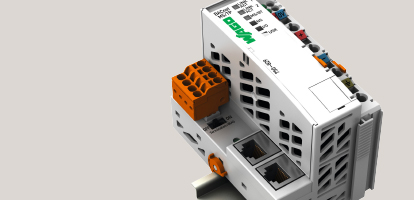


The variety of building systems with their different communication standards is a growing challenge in building automation. The current trend provides a protocol for all levels. The BACnet transmission standard, which is well-established at the building automation level, also provides seamless integration from the control level to the field level.
Open source communication protocol for heterogeneous environments: BACnet enables communication between systems from different manufacturers, for example, in heating and air-conditioning technologies. BACnet/IP is well established as a transmission standard on the automation and control levels. However, communication from the control level through to individual sensors has required additional conversions. By using BACnet MS/TP, this problem is solved, so additional engineering and programming expenses are no longer necessary. Another advantage is the ability to establish simple connections using standard twisted-pair cabling as a flexible and cost-effective solution for serial communication in the building.
BACnet MS/TP (Master-Slave/Token Passing) enables cross-level integration of field devices. As a result, the standard is increasingly used for detecting analog and digital I/O signals. Remotely distributed sensors can be queried and information can be transmitted to the automation level, for example, regarding current temperature and humidity values, and even the system status,. A large number of distributed data points across large distances — up to several hundred meters — can be inexpensively connected and the data transmitted to the BACnet/IP via a router.
New BACnet Controller with MS/TP Functionality
WAGO’s new 750-831 BACnet MS/TP Controller combines all of the technical features of the well-established 750-829 BACnet/IP Controllers with communication via MS/TP. Due to the variety of available I/O modules, the WAGO controller can integrate sensors and actuators directly from the field level. Perhaps most important, the increased demands for energy efficiency require greater integration and communication of building systems with each other.
The BACnet Controller is used for applications in heating, ventilation, and air-conditioning, such as connecting frequency converters or pumps. It can also be used in individual room automation to control lighting, sun blinds, and temperature.
The so-called “native” mode is particularly useful, as the BACnet MS/TP Controller will automatically generate the appropriate BACnet objects for the individual channels of the connected I/O modules. This means that the user simply plugs digital and analog I/O modules into the device, the controller scans the bus module and then automatically generates appropriate BACnet objects for the digital and analog hardware data points. The result: The controller is immediately ready for use after assigning a BACnet device address and baud rate. The settings can be input or adjusted via the service interface (ETHERNET) in a standard web browser.
The WAGO BACnet Configurator is available as stand-alone software for commissioning, configuration, and administration of all functions. The configuration relationships with other devices can also be set using this tool. A powerful browser has been integrated for later parameter adaptation. The BACnet Configurator or WAGOI/O-PRO software can also be used to create additional BACnet objects.
Both the WAGO BACnet/IP and MS/TP Controllers provide an optimal solution for the described applications, offering PLC functionality for complex control tasks and interfaces for different sub-busses, such as DALI, KNX TP1, EnOcean, LON®, or M-Bus.
To minimize programming effort on the part of the user, WAGO provides a comprehensive HVAC library, which includes readymade system macros for many common applications. These include applications such as heating circuit control and domestic hot water supply, cascade control using cross-flow heat exchangers, supply temperature control, return temperature limitation, and frequency regulated fans.
BACnet Controller as a Multifunctional Interface
The modular WAGO-I/O-SYSTEM enables connection of virtually any combination of digital and analog inputs and outputs, as well as various sub-busses, to one fieldbus controller. It then acts as a multifunctional and highly economical interface for connecting decentralized, bus-compatible sensors and actuators from different technologies. The controller ensures complete integration and is thus interoperable with components from different manufacturers in a BACnet network.
Text: Cord Rombach, WAGO
Photo: WAGO